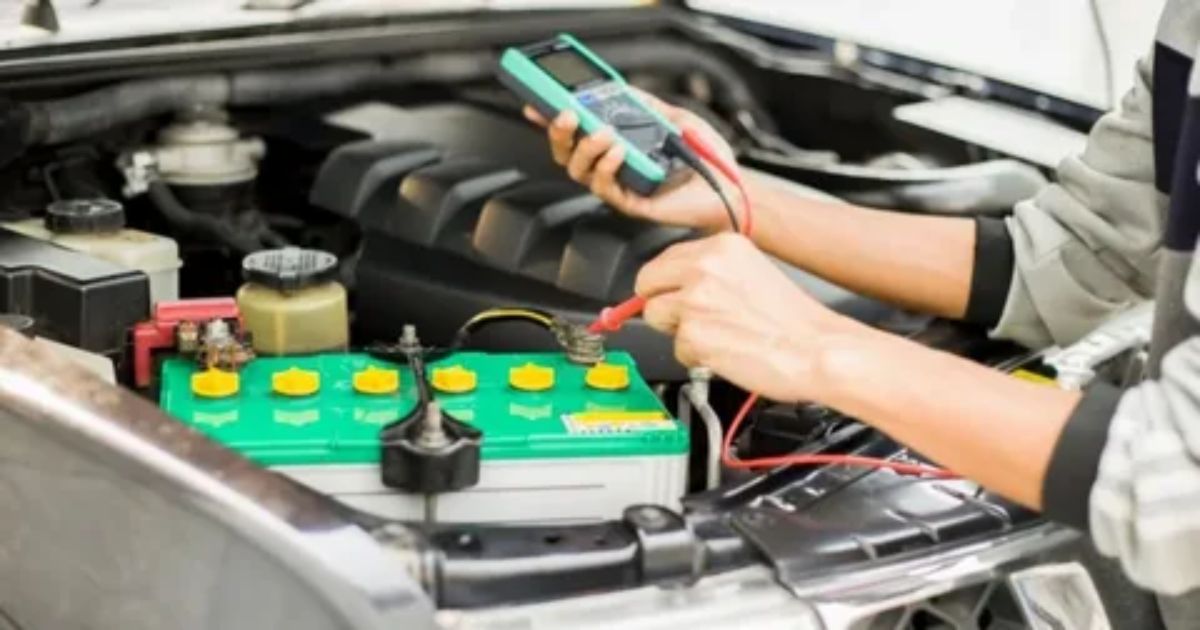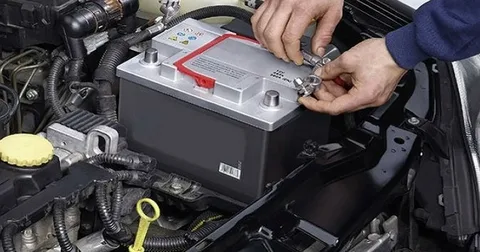There is a wide range of battery types used in automotives, and they do not all fall into the same hazardous material category. This begs the question, Auto Batteries Are An Example Of Which Hazard Class? Depending on the battery type, the EPA (Environmental Protection Agency) and DOT (Department of Transportation) regulate it differently.
Nowadays, where technology is omnipresent, understanding the classification of hazardous materials becomes crucial. Among the various hazardous materials encountered in daily life, automotive batteries stand out as a significant example. This article also aims to explore the hazard classification of automotive batteries and shed light on their associated risks and safety measures.
What Are Hazardous Materials?

Before delving into the specifics of automotive batteries, it’s essential to grasp the concept of hazardous materials. Hazardous materials, often abbreviated as HAZMAT, refer to substances or materials that pose a risk to health, safety, property, or the environment. These materials can be solids, liquids, or gases and may exhibit characteristics such as flammability, corrosiveness, toxicity, or reactivity.
Is a Car Battery a Hazardous Material?
Yes, automotive batteries fall under the category of hazardous materials due to their potential to cause harm if mishandled or improperly disposed of. These batteries contain various chemicals and heavy metals, including lead and sulfuric acid, which can pose environmental and health risks if not managed appropriately.
How Many Hazardous Classes Are There?
The classification of hazardous materials is divided into different hazard classes, each representing a specific type of hazard. The United Nations has established nine hazard classes, ranging from Class 1 (Explosives) to Class 9 (Miscellaneous Dangerous Substances and Articles). These classes help standardize the identification, handling, and transportation of hazardous materials worldwide.
Auto Batteries Are An Example Of Which Hazard Class

Automotive batteries are primarily classified under Hazard Class 8, which encompasses corrosive substances. This classification is attributed to the presence of corrosive electrolytes such as sulfuric acid within the battery casing. Sulfuric acid is highly corrosive and can cause severe burns and damage to skin, eyes, and surrounding materials upon contact.
Understanding the Hazard Class of Automotive Batteries
The Hazard Class 8 designation underscores the importance of handling automotive batteries with caution and following proper safety protocols. Individuals involved in the transportation, storage, or disposal of automotive batteries must be aware of the associated hazards and take necessary precautions to mitigate risks.
DOT classes of hazardous materials:
- Explosives
- Gasses
- Flammable liquids and combustible liquids
- Flammable Solid, Spontaneously Combustible, and Dangerous When Wet
- Oxidizer and Organic Peroxide
- Poison (Toxic) and Poison Inhalation Hazard
- Radioactive
- Corrosive
- Miscellaneous hazardous materials
Auto Batteries Are An Example Of Which Hazard Class (Walmart)
Walmart, a leading retailer of automotive products, recognizes the hazardous nature of automotive batteries and adheres to strict safety guidelines in their handling and storage. By classifying automotive batteries under Hazard Class 8, Walmart emphasizes the importance of safety awareness among its employees and customers.
Why Are Automotive Batteries Considered Hazardous?
The hazardous nature of automotive batteries stems from their chemical composition and potential to cause harm if mishandled. Lead-acid batteries, the most common type of automotive battery, contain lead plates immersed in sulfuric acid electrolyte. This composition makes them susceptible to leakage, corrosion, and release of toxic gases if damaged or improperly maintained.
The Two Main Battery Types:
Wet/Flooded Batteries:
Wet or flooded batteries are the traditional type of lead-acid batteries commonly found in vehicles. These batteries consist of lead plates submerged in a liquid electrolyte solution, typically sulfuric acid diluted with water. While durable and cost-effective, wet batteries require periodic maintenance to replenish electrolyte levels and prevent sulfation.
Lithium-Ion Batteries:
Lithium-ion batteries represent a newer and increasingly prevalent type of automotive battery, especially in electric vehicles (EVs) and hybrid vehicles. Unlike traditional lead-acid batteries, lithium-ion batteries utilize lithium ions to store and release electrical energy. While lithium-ion batteries offer higher energy density and longer lifespan compared to lead-acid batteries, they also pose unique safety challenges, including the risk of thermal runaway and fire.
The Risks Associated with Automotive Batteries
Handling automotive batteries entails various risks, including chemical burns, electrical shock, and environmental contamination. Improper handling, storage, or disposal of automotive batteries can lead to accidents, injuries, and environmental damage. It is essential to follow safety guidelines and regulations to minimize these risks and ensure responsible battery management.
The Basic Steps to Shipping Automotive Batteries

Shipping automotive batteries requires careful planning and adherence to regulatory requirements. The following steps outline the basic process of shipping automotive batteries safely:
Step 1: Classify the Material
Properly classify the automotive batteries according to their hazard class and packaging group to determine the appropriate shipping regulations and precautions.
Step 2: Select a Carrier
Choose a reputable carrier with experience in handling hazardous materials and ensuring compliance with transportation regulations, including labeling and documentation.
Step 3: Identify the Proper Packaging
Use approved packaging materials and containers designed specifically for transporting hazardous materials, such as UN-certified packaging for corrosive substances.
Step 4: Mark and Label the Package
Clearly mark the shipping containers with hazard labels, handling instructions, and emergency contact information to alert carriers and handlers to the presence of hazardous materials.
Step 5: Paperwork
Complete all required documentation, including shipping manifests, dangerous goods declarations, and emergency response information, to facilitate safe and compliant transportation of automotive batteries.
Toilet Bowl Cleaner Is An Example Of Which Hazard Class
Toilet bowl cleaner is typically classified under Hazard Class 8 due to its corrosive properties. Similar to automotive batteries, toilet bowl cleaners contain corrosive chemicals that can cause skin and eye irritation upon contact.
Batteries Are An Example Of What Type of Energy
Batteries store and release electrical energy through chemical reactions, making them an example of electrochemical energy storage devices.
What Type of Energy Is Stored in a Battery Quizlet
The energy stored in a battery is primarily chemical energy, which is converted into electrical energy when the battery is connected to a circuit and undergoes chemical reactions.
Conclusion
In conclusion, automotive batteries represent a significant example of hazardous materials, classified under Hazard Class 8 due to their corrosive nature. Understanding the hazards associated with automotive batteries and following proper safety protocols are essential to minimize risks and ensure safe handling, transportation, and disposal. By adhering to regulatory requirements and best practices, individuals and organizations can mitigate the potential dangers posed by automotive batteries and promote environmental stewardship.
FAQs
Are automotive batteries considered hazardous materials?
Yes, automotive batteries are classified as hazardous materials due to their corrosive electrolytes and potential to cause harm if mishandled.
What are the main types of automotive batteries?
The two main types of automotive batteries are wet/flooded batteries and lithium-ion batteries.
How should automotive batteries be shipped safely?
Automotive batteries should be properly classified, packaged, labeled, and documented according to regulatory requirements for safe transportation.










